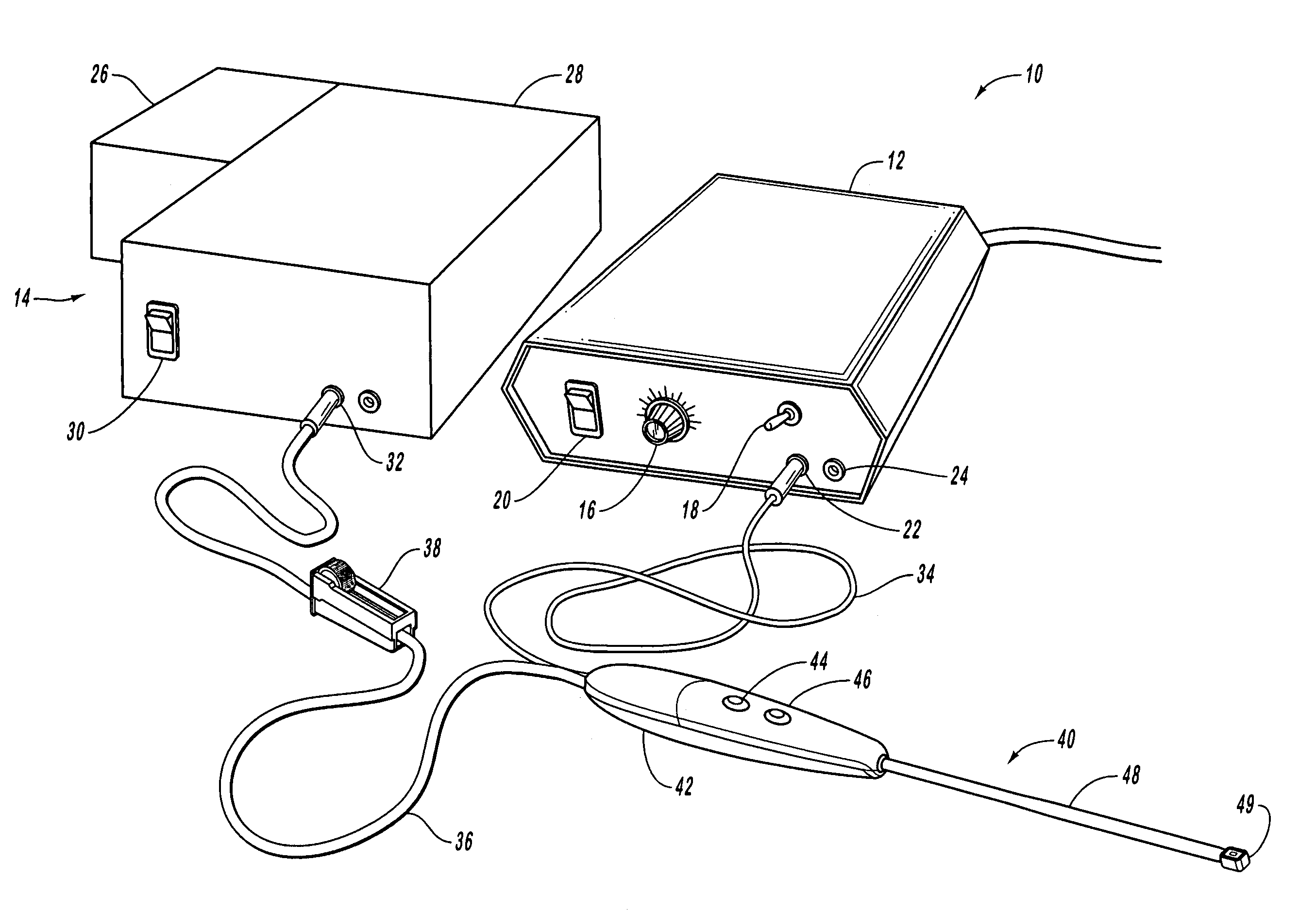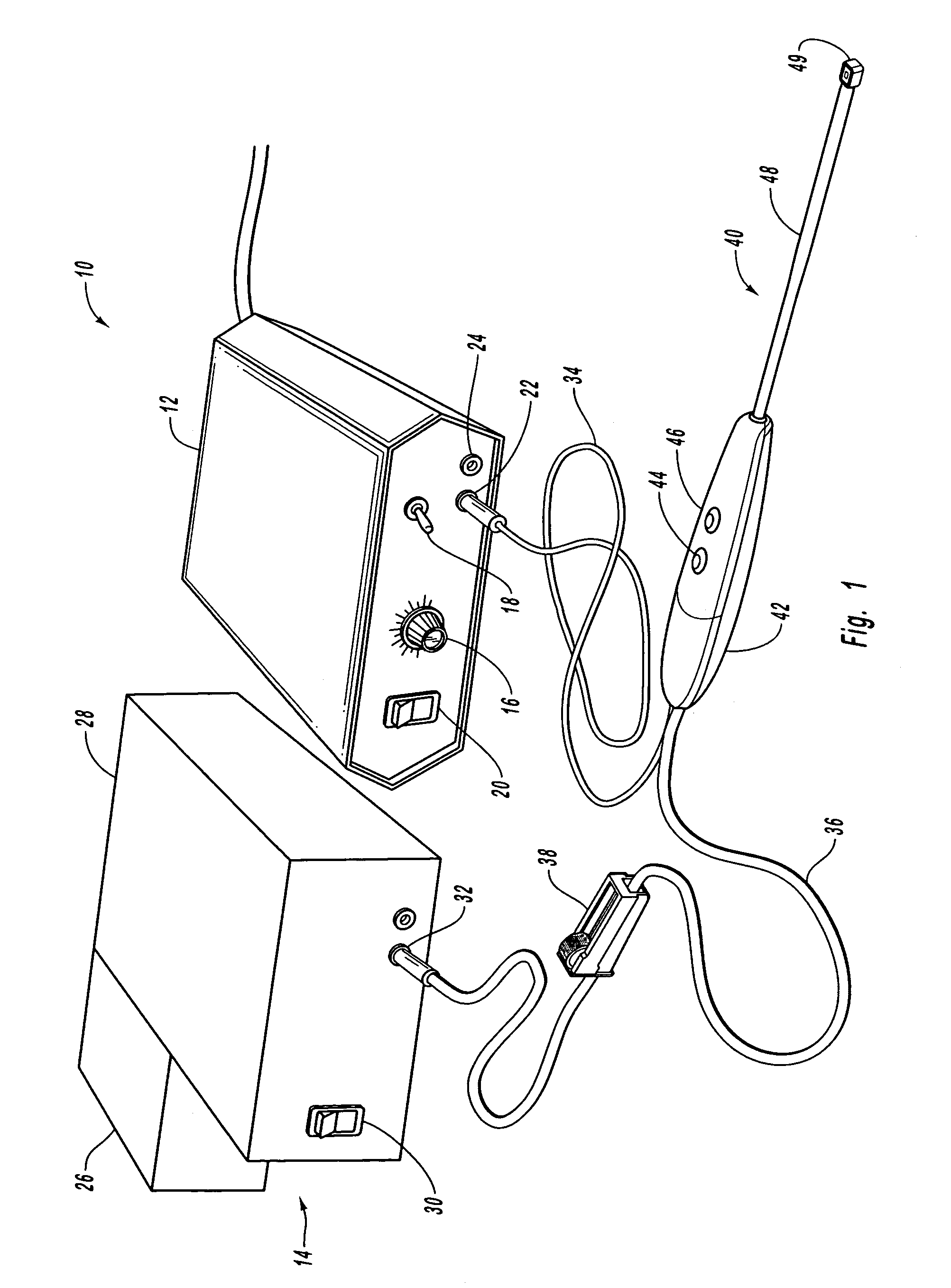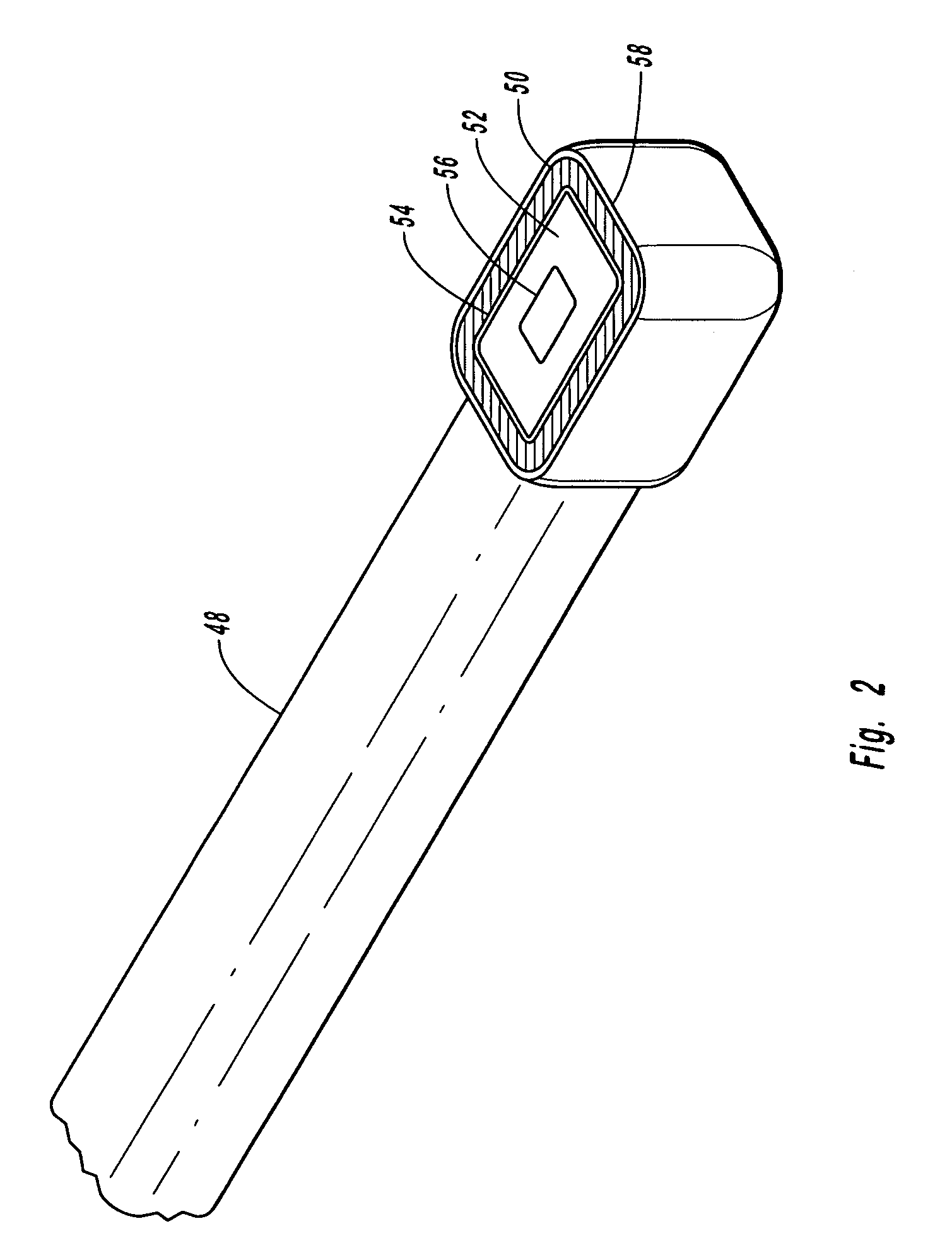Electrosurgical instrument with an ablation mode and a coagulation mode
a technology of coagulation mode and ablation mode, applied in the field of electrosurgical instruments, to achieve the effect of reducing the current density in the coagulation mode, small surface area, and relatively high current density
- Summary
- Abstract
- Description
- Claims
- Application Information
AI Technical Summary
Benefits of technology
Problems solved by technology
Method used
Image
Examples
Embodiment Construction
[0026]The present invention is directed to an electrosurgical instrument that can be selectively operated to alternatively perform ablation or coagulation. The electrosurgical instrument includes at least two electrodes on the electrode probe that can be activated using an RF generator. The electrosurgical instrument is switchable between an ablation mode and a coagulation mode by changing the effective active surface area. In particular, in the ablation mode, a relatively small surface area is active. Thus, for a given power input, the current density is relatively high. In the coagulation mode, the active surface area is increased, thereby reducing the current density in the coagulation mode for the given power input.
[0027]FIG. 1 shows an exemplary electrosurgical system according to one embodiment of the invention. The electrosurgical system 10 includes an electrosurgical probe 40 that is electrically coupled to an electrosurgical generator 12 and an aspirator 14.
[0028]Electrosur...
PUM
 Login to View More
Login to View More Abstract
Description
Claims
Application Information
 Login to View More
Login to View More - R&D
- Intellectual Property
- Life Sciences
- Materials
- Tech Scout
- Unparalleled Data Quality
- Higher Quality Content
- 60% Fewer Hallucinations
Browse by: Latest US Patents, China's latest patents, Technical Efficacy Thesaurus, Application Domain, Technology Topic, Popular Technical Reports.
© 2025 PatSnap. All rights reserved.Legal|Privacy policy|Modern Slavery Act Transparency Statement|Sitemap|About US| Contact US: help@patsnap.com



